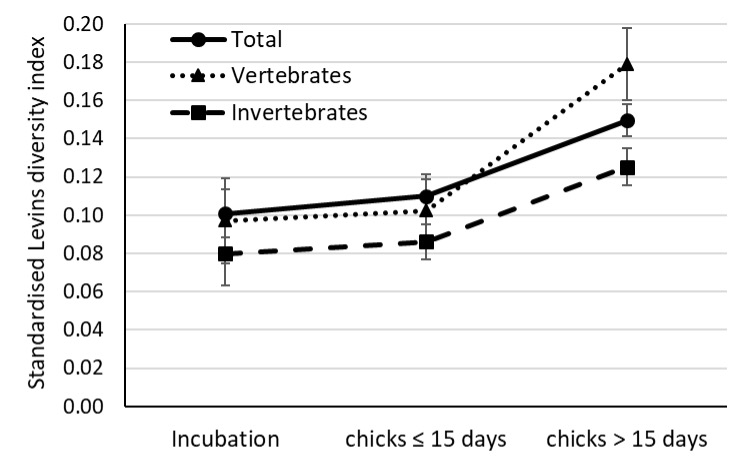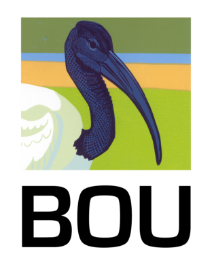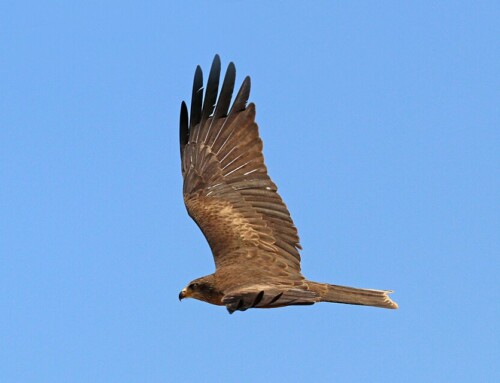LINKED PAPER Trophic niche width of Canary island kestrels and its relation to fledging success. Carrillo-Hidalgo, J., & González-Dávila, E. Ardeola. DOI: 10.13157/arla.72.2.2025.ra5  VIEW
VIEW
Food resource availability – considering quality, quantity, nutrient diversity and caloric intake – may be a limiting factor that influences life-history traits and community structure in birds.
Within a population of the same species, those individuals that use the greater range of resources (have a wider trophic niche; generalists, essentially polyphagous) may show more tolerance to changes in environmental conditions, and therefore would better adapt than individuals with narrow trophic niche width (specialists; essentially monophagous or oligophagous) in harsher and less predictable environments.
It is expected that on exploiting a wide trophic niche, any bird species or population may improve its breeding density, thus stabilising or enhancing breeding rates. But also, as a result of behavioural, physiological, morphological or anatomical adaptations, specialising in a narrow trophic niche may be advantageous because it would improve foraging efficiency, thus reducing foraging effort and leading to greater fledging success (diet specificity hypothesis). In addition, it has also been shown that fledging success does not vary between trophic specialists and generalists, which could be termed the diet flexibility hypothesis.
Since within a bird population of the same species an individual or pair may have a particular trophic niche (tendency to specialise), unlike that of the population as a whole, this tendency could change fledging success, including for island raptors.
The ecological circumstances which island-dwelling birds are faced with, such as strong intraspecific competition, as well as increased territorial overlap with neighbours and greater tolerance of subordinates could lead to broadening or narrowing in trophic niche width, or no width changes at all.
Research into trophic niche variations in raptors and their relationship to fledging success remains scarce for island-dwelling species. In particular, to our knowledge, this relationship has remained unstudied for island-dwelling kestrels (Falco tinnunculus). By means of pellet analysis, and using diversity indexes, we determined the trophic niche variations of the kestrel (F. t. canariensis) population breeding in natural rocky cavities in xeric scrub on the oceanic island of Tenerife over a seven-year period.
Tenerife island kestrels behave as trophic generalists with a wide trophic niche, enabled by the capture of a large variety of insects, which is similar to continental populations inhabiting warmer areas such as the Iberian Peninsula, Italy or Algeria. The generalist trophic strategy of the island kestrel population resembles the most common behaviour in this species. The trophic strategies of insular raptors are versatile, showing different trophic niche widths according to species and islands.
 Figure 1. Comparison of trophic diversity (standardised Levins diversity index, ± SE) in vertebrate and invertebrate prey items in relation to the breeding phase of southern Tenerife kestrels.
Figure 1. Comparison of trophic diversity (standardised Levins diversity index, ± SE) in vertebrate and invertebrate prey items in relation to the breeding phase of southern Tenerife kestrels.
The trophic niche width of most pairs shows that they usually hunt the same subset of the food resources in the study area. Dietary overlap between the island kestrel pairs was high and was unrelated to the distance between them. Trophic diversity showed a significant increase as the breeding cycle progressed (Fig 1).
 Figure 2. Fledging success variability and trophic diversity (standardised Levins diversity index) in southern Tenerife kestrels during 2010-2016. Whiskers represent 1 SE.
Figure 2. Fledging success variability and trophic diversity (standardised Levins diversity index) in southern Tenerife kestrels during 2010-2016. Whiskers represent 1 SE.
Fledging success showed a tendency to increase as trophic diversity increased (Fig 2). We found no differences in fledging success between generalists and more specialist pairs, which suggests that these trophic strategies may be quite similar in terms of evolutionary fitness. However, the relationship between fledging success and trophic diversity is variable in raptors. Expanding the trophic niche could be an effective adaptation in island environments with unpredictable yet suitable conditions for breeding.
Image credit
Top right: Female Common Kestrel Falco tinnunculus canariensis with a captured katydid (Tettigoniidae) © Raquel Martín Perdigón





